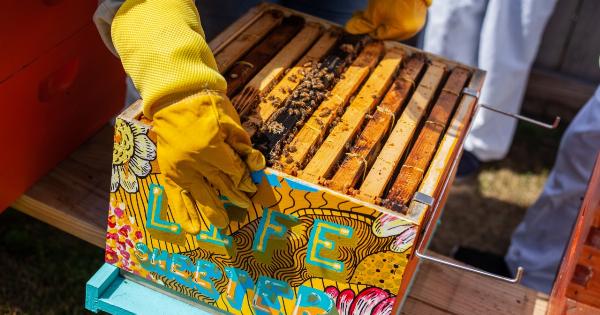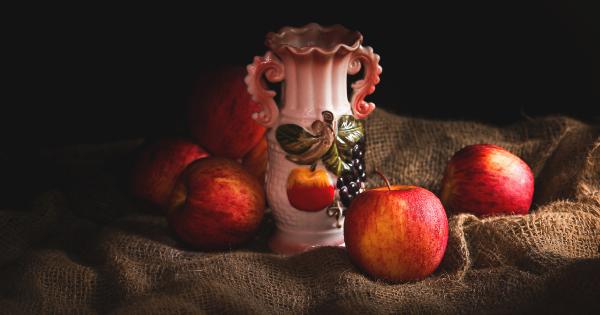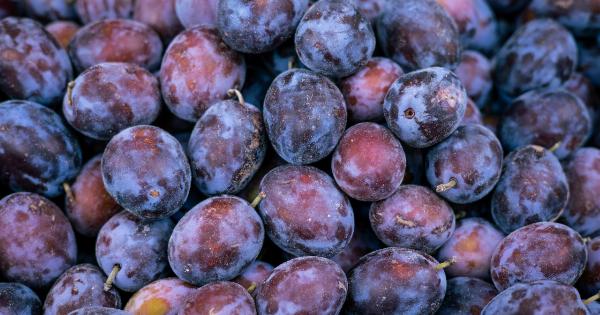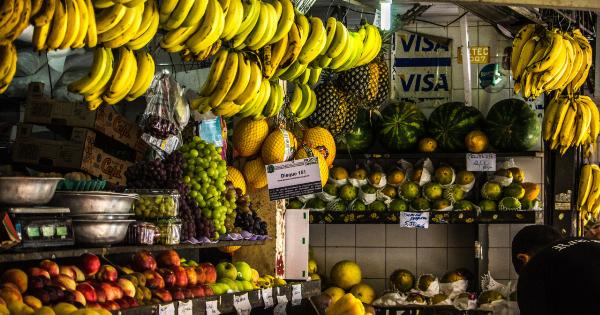Genetic engineering has long been a controversial topic, with both its proponents and opponents debating the ethical implications and potential risks. However, one significant breakthrough in this field is the creation of non-browning apples.
Through genetic engineering, scientists have been able to manipulate the genes responsible for apple browning, effectively extending their shelf life, enhancing their appeal, and reducing food waste. This article explores the process and benefits of creating non-browning apples.
The Science behind Apple Browning
Before delving into the genetic engineering aspect, let’s first understand the mechanism behind apple browning. When an apple is cut, damaged, or even bruised, it undergoes a rapid enzymatic reaction known as enzymatic browning.
This process is triggered by an enzyme called polyphenol oxidase (PPO). When the apple tissue is exposed to oxygen, PPO catalyzes the oxidation of phenolic compounds found naturally in apples, resulting in the enzymatic browning reaction that we commonly observe.
The Drawbacks of Apple Browning
Apple browning not only affects the visual appeal of the fruit but also impacts its taste and nutritional value.
When consumers come across a browned apple, they often perceive it as unappealing or spoiled, leading to a considerable amount of food waste. Additionally, the browning process alters the flavor profile of the apple, making it less enjoyable to eat. This enzymatic reaction also destroys certain vitamins and antioxidants, decreasing the overall nutritional quality of the fruit.
Genetic Engineering: The Solution to Browning
In recent years, genetic engineering has emerged as a potential solution to overcome the limitations imposed by apple browning.
By identifying and manipulating the genes responsible for enzymatic browning, scientists have been able to engineer apples that resist browning even when exposed to oxygen.
The Arctic Apple
One notable example of a non-browning apple is the Arctic Apple, developed by Okanagan Specialty Fruits Inc. using genetic engineering techniques.
The Arctic Apple’s genetic makeup has been modified to suppress the production of PPO, the enzyme responsible for browning. As a result, the apple retains its natural appearance and flavor even when sliced, diced, or bruised.
The Benefits of Non-Browning Apples
The creation of non-browning apples brings several benefits to consumers, growers, and the environment:.
1. Enhanced Shelf Life
The ability of non-browning apples to resist enzymatic browning significantly extends their shelf life. This feature allows retailers to display and sell apples without the fear of rapid browning, reducing product waste and increasing profitability.
Furthermore, consumers can enjoy fresh-looking apples for a more extended period, reducing the urgency to consume them immediately.
2. Reduced Food Waste
Food waste is a significant problem globally, with a considerable portion resulting from fruits and vegetables discarded due to browning.
Non-browning apples help combat this issue by remaining visually appealing even after being sliced or damaged, reducing the likelihood of their disposal. By minimizing food waste, non-browning apples contribute to a more sustainable food system.
3. Improved Nutritional Value
The enzymatic browning reaction affects the nutritional value of apples, particularly by reducing vitamin C content. Non-browning apples maintain their nutritional integrity due to the inhibition of the browning enzymes.
This preservation of vitamins and antioxidants allows consumers to receive the full health benefits of apples, promoting a healthier lifestyle.
4. Enhanced Consumer Appeal
Non-browning apples have a higher visual appeal compared to their browning counterparts. Consumers are more likely to purchase apples that remain fresh-looking, even after being cut.
By offering non-browning apples, grocery stores and farmers’ markets can attract customers with an aesthetically pleasing product, ultimately leading to increased sales.
Concerns and Criticisms
While the creation of non-browning apples through genetic engineering has its benefits, it is not without its share of concerns and criticisms:.
1. Potential Ecological Impact
Some critics argue that the enhanced shelf life and extended freshness of non-browning apples may contribute to increased transportation and storage requirements, leading to a higher carbon footprint.
However, proponents argue that by reducing overall food waste, the negative ecological impact can be mitigated.
2. Lack of Transparency and Labeling
Opponents of genetically engineered foods often raise concerns about the lack of transparency and labeling. Skeptics argue that consumers have the right to know if the apples they are purchasing have been genetically modified.
The labeling debate raises questions about consumer choice, informed decision-making, and potential allergenicity.
Conclusion
Genetic engineering has allowed for the creation of non-browning apples, offering an innovative solution to the problems caused by enzymatic browning.
These apples provide enhanced shelf life, reduced food waste, improved nutritional value, and increased consumer appeal. However, concerns regarding potential ecological impacts and the need for transparency and labeling must be addressed.
The development and adoption of non-browning apples represent a significant step forward in improving the quality, longevity, and sustainability of the fresh produce industry.






























